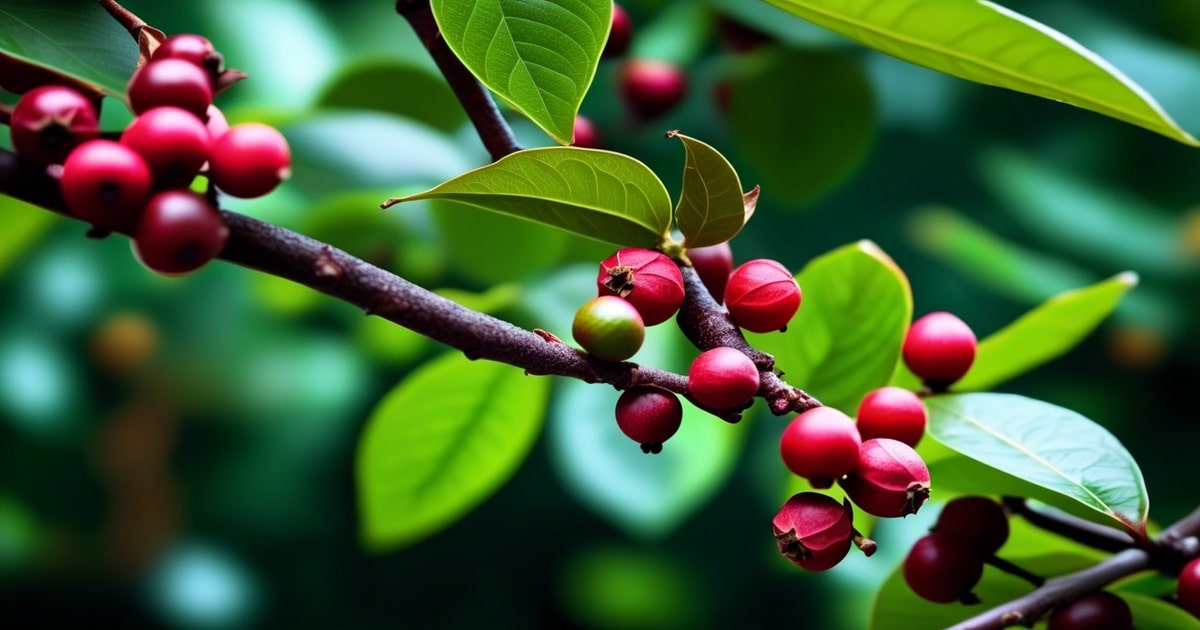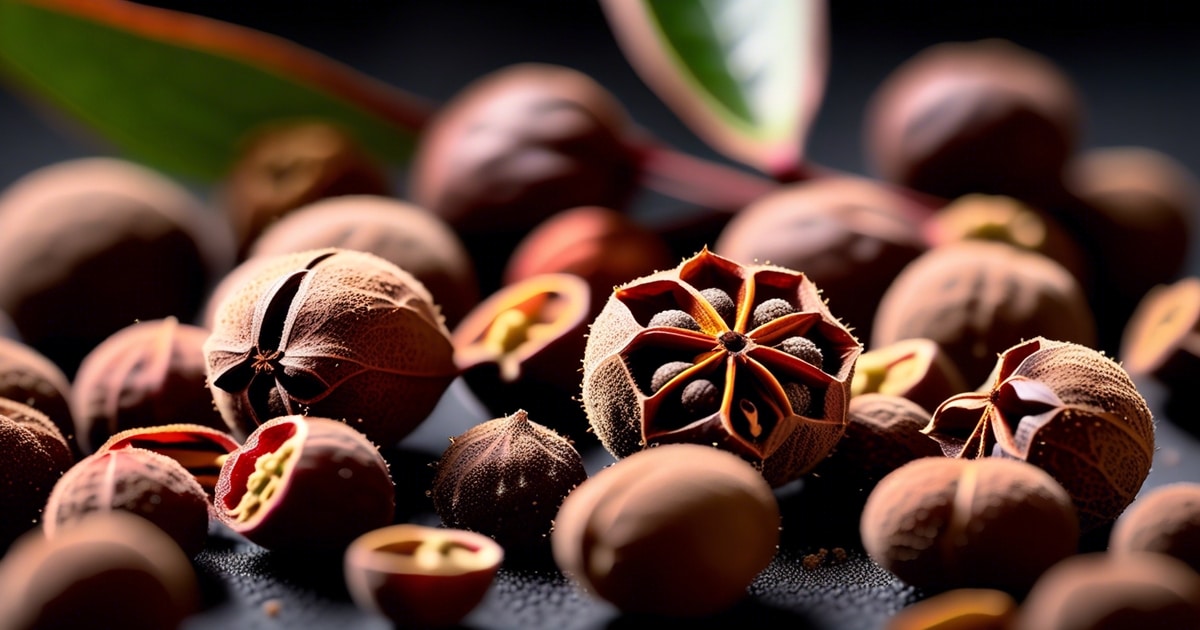Key Takeaways
-
Allspice is a versatile spice with a rich history and a wide range of culinary uses.
-
Understanding the origin, taste profile, and proper storage of allspice can enhance your cooking and baking experiences.
-
When sourcing allspice, consider its production and cultivation methods to ensure quality and authenticity.
-
Experiment with substitutions for allspice to create unique flavors while cooking or baking.
-
Proper storage of allspice is essential to maintain its flavor and aroma over time.
-
Incorporating allspice into your culinary repertoire can add depth and warmth to various dishes, from savory to sweet.
Allspice, a versatile spice with a rich history and multifaceted uses, is a staple in many cuisines worldwide. From its warm, aromatic flavor to its medicinal properties, allspice has captured the attention of chefs and health enthusiasts alike. Uncover how this single spice can add depth and complexity to your cooking while offering potential wellness advantages.
A Brief History of Allspice
Indigenous Roots
Allspice, also known as “Jamaica pepper,” is indigenous to the West Indies. It was named by European explorers who mistook it for a combination of other spices like nutmeg, cinnamon, and cloves due to its unique flavor profile.
The Mayans and Aztecs were among the early civilizations that used allspice in their cooking. They recognized its distinct taste and aromatic properties, incorporating it into various dishes such as sauces and meat preparations.
European Exploration
European colonists brought allspice back to Europe after encountering it during their voyages. Its popularity grew rapidly due to its versatility in culinary applications. The spice’s name reflects this confusion; however, it is unrelated to black pepper or peppercorns despite being called “allspice.”
Allspice has stood the test of time, retaining its significance in global cuisine from ancient civilizations through modern-day cooking practices. Its rich history makes it an essential ingredient in many cuisines worldwide.
Origin and Trade of Allspice
Native to Jamaica

Allspice, also known as “Jamaican pepper,” is native to the Caribbean island of Jamaica. The plant thrives in tropical climates, with Jamaica being one of the primary producers of this versatile spice.
Jamaica’s warm climate and rich soil provide ideal conditions for cultivating allspice. Its cultivation has become integral to Jamaican agriculture, contributing significantly to its economy.
Exported Worldwide
Beyond its origins in Jamaica, allspice is exported worldwide due to its popularity and diverse uses in culinary practices around the globe. It is a staple ingredient in Caribbean cuisine and Middle Eastern dishes, where it adds a unique flavor profile.
The exportation of allspice contributes to international trade and plays a crucial role in connecting different cultures through shared culinary experiences. Its widespread availability allows people from various regions to incorporate its distinctive taste into traditional recipes.
Key Player in Caribbean Cuisine
In Caribbean cuisine, allspice holds undeniable significance. It is a fundamental ingredient, adding depth and complexity to dishes such as jerk chicken, curries, stews, and marinades. The unique combination of flavors resembling cloves, cinnamon, and nutmeg makes it an essential component of many traditional Caribbean recipes.
Due to its aromatic nature and versatility across sweet and savory dishes alike, allspice is an indispensable element that characterizes the vibrant flavors of Caribbean cooking.
Production and Cultivation of Allspice
Harvesting Process
Allspice is harvested from evergreen trees, where the berries are picked when green. These unripe berries are then dried, which gives them their aromatic flavor. Drying is crucial in developing allspice’s characteristic taste and aroma, making it suitable for various culinary uses.
The wild allspice or Carolina allspice plants produce fresh leaves that contain an essential oil called eugenol, which contributes to the unique flavor profile of this spice. This essential oil makes allspice a versatile ingredient used in different styles of chili, stews, desserts, and many other dishes.
Cultivation and Usage
Allspice comes from an evergreen tree or shrub native to the New World. Its versatility allows it to be incorporated into various dishes, such as meat-based recipes and desserts, due to its warm, peppery flavor with hints of cloves and cinnamon.
In Caribbean cuisine, allspice is commonly used in jerk seasoning for marinating meats before grilling. It’s also a key ingredient in Jamaican curries and other regional dishes across Central America.
Physical Description of Allspice Berries

Appearance
Allspice berries are small, dark brown, and closely resemble peppercorns. They are about the size of unripe berries and have a compact appearance.
The aroma of allspice berries is quite distinctive. When crushed or ground, they release an aromatic scent that carries hints of cloves, cinnamon, and nutmeg. This unique fragrance makes them a popular choice in various culinary applications.
Culinary Use
In cooking, allspice is used to flavor both sweet and savory dishes. It’s commonly found in desserts like cakes, cookies, and pies due to its warm and spicy flavor reminiscent of a blend of cloves, cinnamon, and nutmeg. Additionally, allspice is often included in meat rubs for grilling or roasting to add depth and complexity to the dish.
Allspice can be added whole or ground for an extra layer of warmth. Moreover, it’s also utilized in pickling mixtures for fruits and vegetables to enhance their flavors with its unique combination of aromas.
Taste Profile of Allspice
Warm and Earthy Flavor
Allspice is renowned for its warm and earthy flavor, reminiscent of a blend of cinnamon, nutmeg, and cloves. This unique combination gives allspice its distinctive taste that sets it apart from other seasonings. Its rich and robust flavor adds depth to both savory and sweet dishes.
Allspice’s versatility in enhancing the flavor of various foods makes it an essential ingredient in many cuisines. For example, it is a key component in Jamaican jerk seasoning, contributing to this traditional spice blend’s bold and aromatic profile.
Depth to Savory and Sweet Dishes
In savory dishes, allspice brings out a complex mix of flavors in meat marinades, stews, soups, and curries. It also complements vegetables such as squash or carrots by adding warmth to their natural sweetness. When baking, Allspice enriches the flavor of cakes, cookies, pies, or even chocolate-based desserts with its spicy undertones.
Moreover, due to its ability to evoke the essence of multiple spices within one ingredient—cinnamon’s warmth, nutmeg’s complexity, clove’s pungency—allspice offers cooks an efficient way to achieve a harmonious balance between different flavors, reducing the need for using multiple spices separately.
Uses of Allspice in Cooking and Baking
Meats and Stews
Allspice is a spice that can be used in many dishes. It gives a warm, nice flavor to meats and stews. It makes the food taste good by adding hints of cinnamon, nutmeg, and cloves. For example, putting a bit of allspice in beef stew will make the flavor even better.
Essential in Jerk Seasoning
In Caribbean cuisine, allspice plays an essential role in jerk seasoning. This tasty mix usually has allspice, thyme, garlic, and scotch bonnet peppers. It makes a strong and spicy sauce for meats like chicken or pork. Whether grilling or roasting meat with jerk seasoning, you can’t miss allspice’s unique smell and taste.
Enhancing Desserts
Allspice is not only reserved for savory dishes; it also enhances desserts like cakes and pies. Adding this spice to recipes for apple pie or carrot cake introduces warm undertones that perfectly complement the sweetness of these treats. In baking applications, especially focused on enhancing flavors rather than overwhelming them with spiciness—such as cakes—all the subtle complexity of the spices shines through.
Substitutions for Allspice in Recipes
Blend of Cinnamon, Cloves, and Nutmeg
Allspice is a popular spice that combines the flavors of cinnamon, cloves, and nutmeg. When you run out of allspice, you can create a similar flavor profile by blending these three spices. For example, if your recipe calls for 1 teaspoon of allspice, you could substitute it with 1/2 teaspoon cinnamon, 1/4 teaspoon cloves, and 1/4 teaspoon nutmeg.
This combination will mimic the warm and earthy flavor that allspice adds to dishes like stews, baked goods, and desserts. It’s essential to adjust the quantities based on the substitution to achieve the desired taste in your recipe.
Clove or Cinnamon as Alternatives
If you don’t have all three spices available or prefer a simpler alternative, clove or cinnamon can be used individually as substitutes for allspice. For instance:
-
If your recipe requires 1 teaspoon of allspice:
-
You can use 3/4 teaspoon cinnamon instead.
-
Alternatively, you may opt for 3/4 teaspoon ground cloves to replace the same amount of allspice.
These alternatives allow flexibility when creating recipes while maintaining rich flavors. However, it’s important to remember that each substitution might alter the overall taste slightly, so adjusting other seasonings accordingly is advisable.
Sourcing and Buying Allspice
Whole or Ground
When purchasing allspice, consumers can buy it whole or ground. If opting for whole allspice, look for intact berries without any signs of mold or moisture. On the other hand, when choosing ground allspice, ensure that the powder is free from clumps and has a rich, aromatic scent.
Allspice berries can be used in soups by adding them to the broth while cooking to infuse it with their warm and spicy flavor. The ground version can also be sprinkled directly into soups as a seasoning.
Reputable Spice Vendors
Buying allspice from reputable vendors is crucial to guarantee its quality and freshness. Look for well-known suppliers who adhere to high standards of sourcing and processing spices. This ensures that you are getting authentic allspice without any fillers or additives.
When searching for allspice online, consider checking customer reviews or ratings before purchasing. If buying from local stores, inquire about the source and quality of their spices to make an informed decision.
Proper Storage of Allspice
Airtight Containers
Allspice should be stored in airtight containers to prevent exposure to moisture and air, which can compromise flavor. Airtight containers help maintain the freshness and flavor potency of the allspice by preventing it from absorbing moisture or odors from the surrounding environment.
Allspice is highly sensitive to light and heat, which can cause it to lose its flavor and aroma. Storing allspice in a cool, dark place such as a pantry or cupboard helps preserve its quality. Exposure to direct sunlight or high temperatures should be avoided at all costs.
Shelf Life
To ensure optimal flavor potency, it’s recommended to use allspice within one year of purchase. Using it within this time frame ensures you enjoy the full depth of its flavors when added to your culinary creations.
Consider using vacuum-sealed containers or resealable bags designed for long-term storage when storing allspice for an extended period. This will further protect the spice from air and moisture, helping it retain its flavors for longer.
Summary
In short, allspice is a really important spice with a cool history and lots of uses in cooking. It has a special taste and can be used in many recipes. Knowing how to get, buy, and store allspice right helps keep it fresh for cooking. It can make food taste better, whether it’s savory or sweet.
For those eager to explore new flavors or enhance their cooking skills, experimenting with allspice can lead to delightful discoveries in the kitchen. Embracing the world of spices opens doors to endless culinary possibilities, inviting individuals to expand their palates and enjoy the art of cooking.
Frequently Asked Questions
What is the origin of allspice?
Allspice originates from the Caribbean, particularly Jamaica and Central America. The indigenous people of these regions were the first to use it for its flavor and medicinal properties.
How would you describe the taste profile of allspice?
The taste of allspice resembles a combination of cinnamon, nutmeg, and cloves. It offers a warm and aromatic flavor with hints of pepper.
Can allspice be used as a substitute for other spices in recipes?
Yes, allspice can substitute for various spices such as cinnamon, nutmeg, or cloves due to their similar flavor profile.
Where can one source and buy high-quality allspice?
High-quality allspice can be sourced from specialty shops or online retailers offering organic or gourmet spices. Look for reputable sources with positive customer reviews.
What are the best practices for storing allspice?
Store allspice away from light and heat in an airtight container to maintain its freshness and flavor potency. Keep it in a cool, dry place like a pantry or cupboard.

